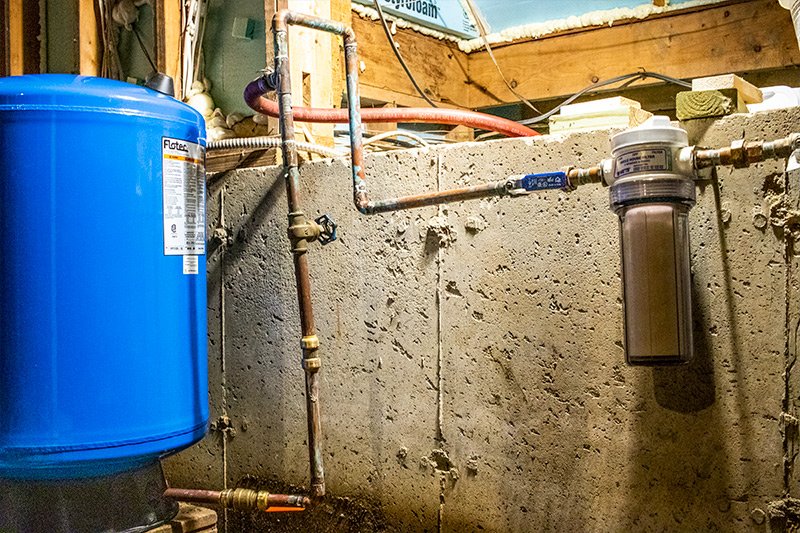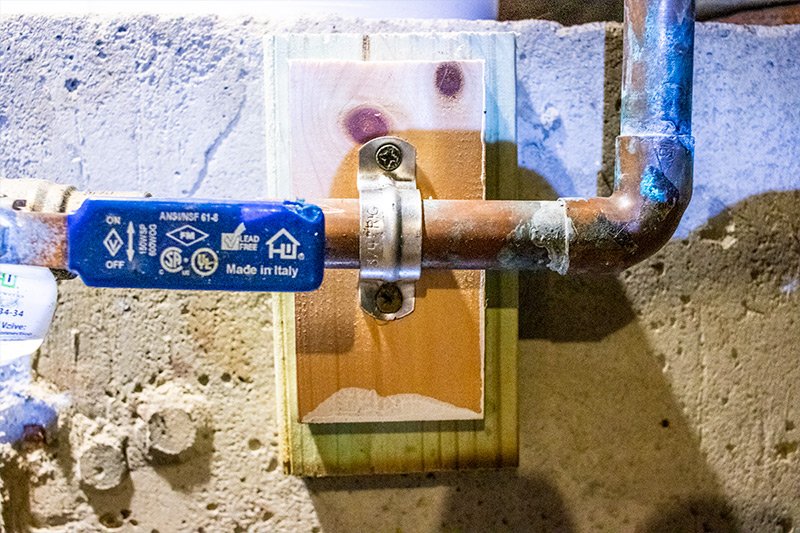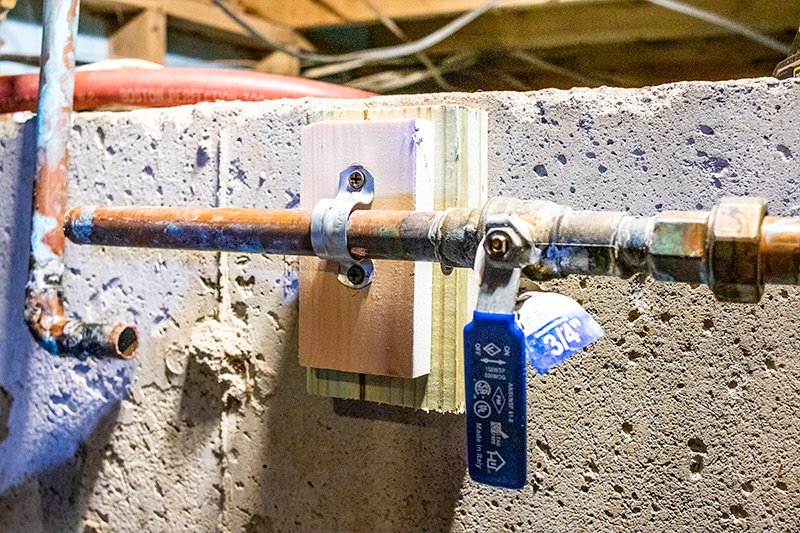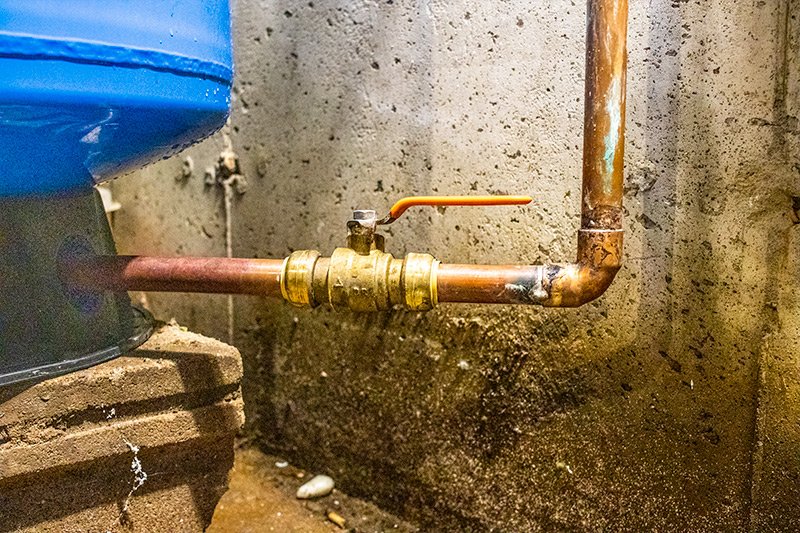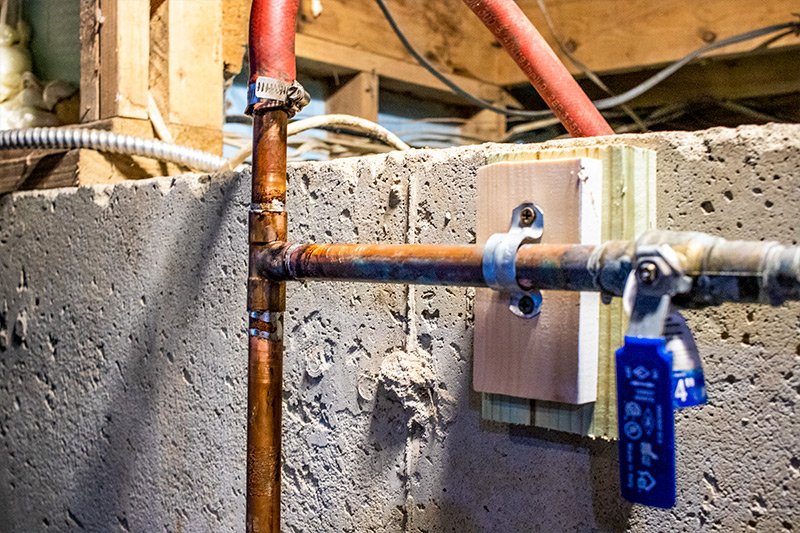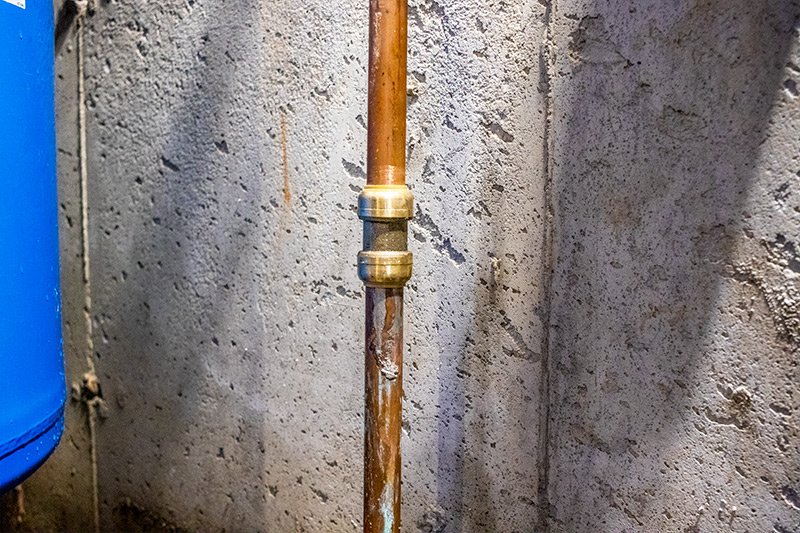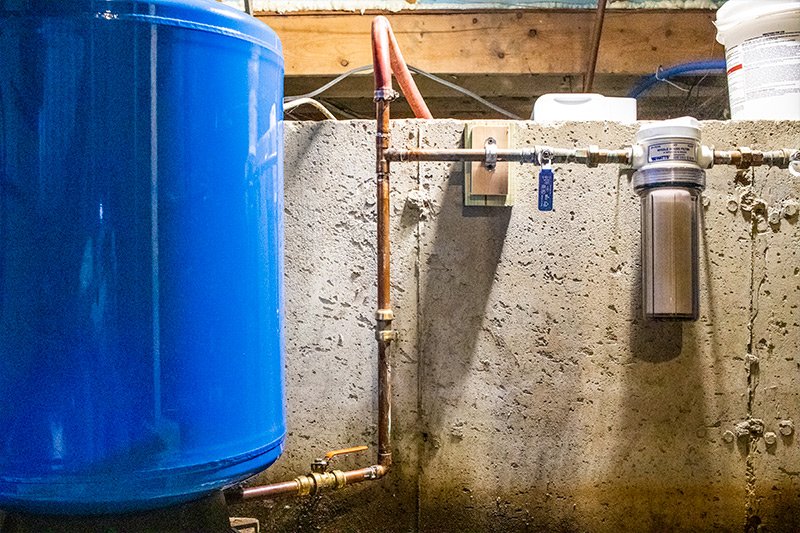LukeLewis
Member
- Joined
- May 7, 2021
- Messages
- 134
- Reaction Score
- 0
- Points
- 21
- #1
Just so you know, there’s no difference between a shallow (dug) well pressure tank and a deep well pressure tank. I stuck the word “shallow” in the title because I thought people might search for that and land on this page. I’m clever like that.
Here’s the situation. A few weeks ago, I began hearing the well pump that’s located in our basement turn on and off much more than it used to in the past. We have a shallow well and because of that, the well is located above ground. And because of that, I can hear its operation rather clearly. Right through the floor. I sit and work on the computer all day directly above the pump. The pump and I have a very close relationship. I know exactly what it does as the day passes.
Since I didn’t like the sound of the kicking on and off every so often (around a half hour), I began my search for what was wrong. The thing is, when the pump did kick on, it would only do so for about a second. As if it only needed to bring up a tiny bit of water from the well. That’s when no one was using any water. We happen to have a small leak in our well check valve and that’s why the pump needs to turn on every so often. When water was being used, the pump would turn on and off much more frequently. More like every ten seconds for about a second or so. I knew something was up and I didn’t like it. From what I read, well pumps don’t like having to turn on and off so much. If they are forced to, they’ll burn out much faster than they normally would. They much more prefer to turn on and stay on for a few minutes just once or twice a day.
After a bit of internet and YouTube research, I discovered that what I had was a faulty pressure tank. A well pressure tank stores water that the pump draws from the well. As the name suggests, it’s pressurized so it can feed the home with water as opposed to having the pump do that. It saves the pump as well as a lot of electricity. This is how it works; the pump turns on and fills the pressure tank about half way with water. Then, the pump turns off. The pressurized tank then feeds the house with water, until it exhausts its pressure, when the pump fills it back up again. Think of the pressure tank as a water balloon. If you fill a balloon with water, it’s got pressure behind it. If you don’t tie the balloon and lay it on the ground, the water will squirt out of it all over the place. There you have it. A well pressure tank.
There are a few things that can go wrong with pressure tanks over time. The membrane inside of them (the balloon) can slowly leak or the membrane can become totally destroyed. Either way, the tank becomes waterlogged and it’s no longer of any use. So, if you suspect your well pump is, what they call, short-cycling, head down to your basement with an air pressure gauge. You’ll see a valve on the tank that looks like it’s from a bicycle tire tube. Check the pressure. If there is none, you’ve got a bad tank. This is what I discovered when I checked the pressure. There’s actually a correct method for checking the pressure. First you’re supposed to turn the well pump circuit breaker off and then you’re supposed to open some sink faucets to relieve any pressure that’s still in the system of pipes. Then check the tank with the gauge. There should be pressure in there. If you have a 20-30 pound pump switch like I have, the pressure should be 18 pounds. I had zero. Nothing. The pressure in the tank is always supposed to be two pounds less than the turn on pressure of your switch.
This is what our original tank looked like. I suspect it was bad since we moved into this house over six years ago. I just never knew what the well pump was supposed to sound like.

I believe that’s a 20-gallon tank. It’s an okay size for a smaller home without much water usage. You always want to get the largest tank you can afford because that will give you the longest lasting pressure without the pump having to turn on to refill it. These small 20-gallon tanks don’t offer much as far as lasting pressure goes.
To get us through, I filled the tank with 18 pounds of air pressure. This brought the well pump back to a routine that we were used to. I also went online and searched around for a new pressure tank. I found a few 20-gallon tanks that cost around $200, which I thought was just okay. Most of these tanks were offered by Home Depot. Then, as I continued to search, I found a “Flotec FP7120 Vertical Pre-Charged Pressure Water Tank, 35 Gallon” for $189.99 on Amazon. This tank came with free shipping, so it was a no-brainer. Almost twice the size for so much less than all the others. I couldn’t resist, so I ordered it.
Pressure tanks are a very simple concept. Let’s say you have a straight water pipe that leads from a source to a destination, such as the pipe that leads from your well to your kitchen sink. If you were to cut that pipe along the way somewhere and install a “T” fitting between the cut, and then run a single pipe from the T that leads to the pressure tank, you’d be good to go. That’s right. To install a pressure tank, all you need to do is splice into your pluming pipes somewhere and run a pipe to the tank. Again, all this thing does is add pressure to a plumbing system.
Since we already had a tank installed, I need to cut the pipe that led to it and remove the tank. I did that and was left with a vertical copper pipe down in the basement, hanging there, waiting for a new copper pipe to be attached to it. Before I did that though, I turned the circuit breaker for the well pump off so the pump wouldn’t turn on as I was working on the system. I also opened the kitchen sink to relieve any built up pressure in the pipes. Then, I began putting the pipes and attachments that were necessary for operation together.
Let me just say one thing before I continue. The old tank was filled to the brim with water. Apparently, the membrane that was inside of it was somehow decimated through the years. Not a good scene. It weighed a ton.
There are two primary attachment areas when it comes to pressure tanks. The first is to the tank and the second is to the pipe that leads to the rest of the plumbing in the house. For the tank attachment, I bought two adapters. Since the tank had a one inch female threaded opening, I needed a one inch male adapter that I was able to screw into it. Then, I needed to be able to screw in a 3/4 inch male adapter to that. That second adapter is what I’d solder the 3/4 inch copper pipe to. Here are some photos.
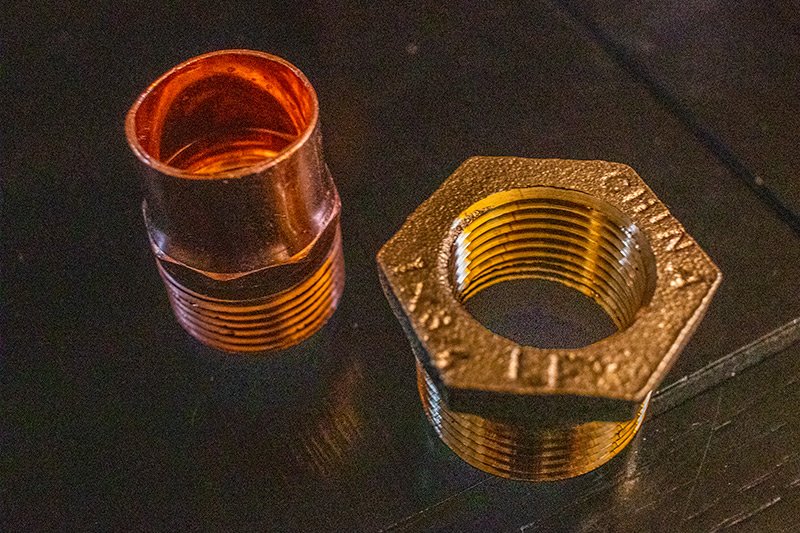

Do you see how the copper one can screw into the brass one? By the way, this is the same exact setup the old tank had. I didn’t even know that.
My plan was to solder a pipe to the copper adapter, attach a valve to that and then attach another pipe to the valve, solder an elbow and then attach another pipe to the existing plumbing. I began with applying some thread tape to the larger adapter.

As it turned out, this was unfortunately not enough tape. After putting everything together and turning the system on, there was a small leak. Always use lots of tape. Take it from me. I had to take everything apart again and start over.
The next thing I did was to fit the 3/4 inch pipe into the copper adapter and solder it. After that, I taped that adapter and screwed it into the first one.
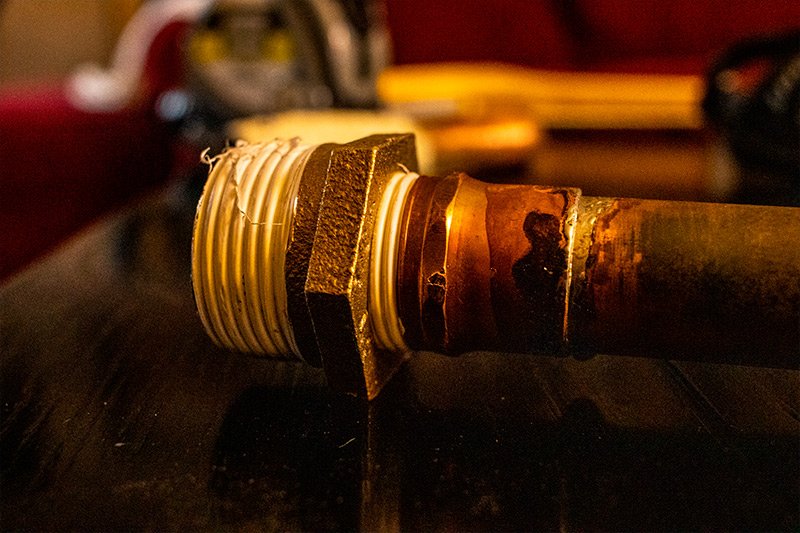

Then, I screwed the pipe setup into the bottom of the tank.
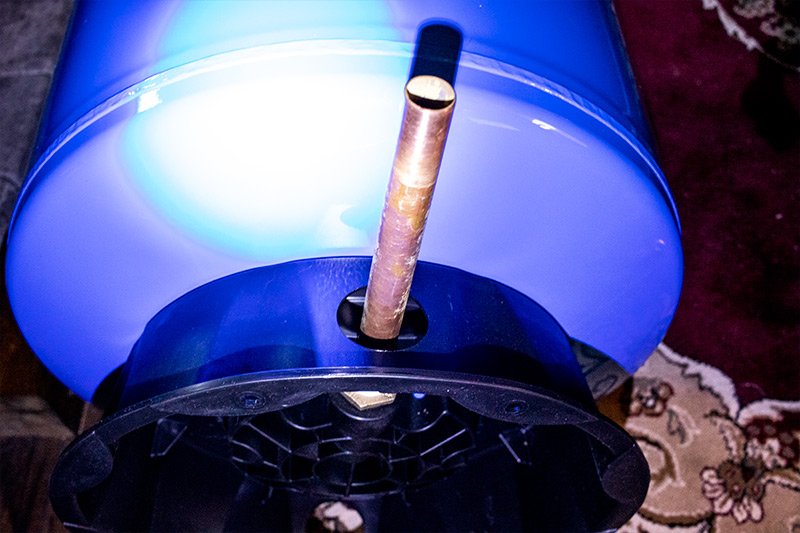
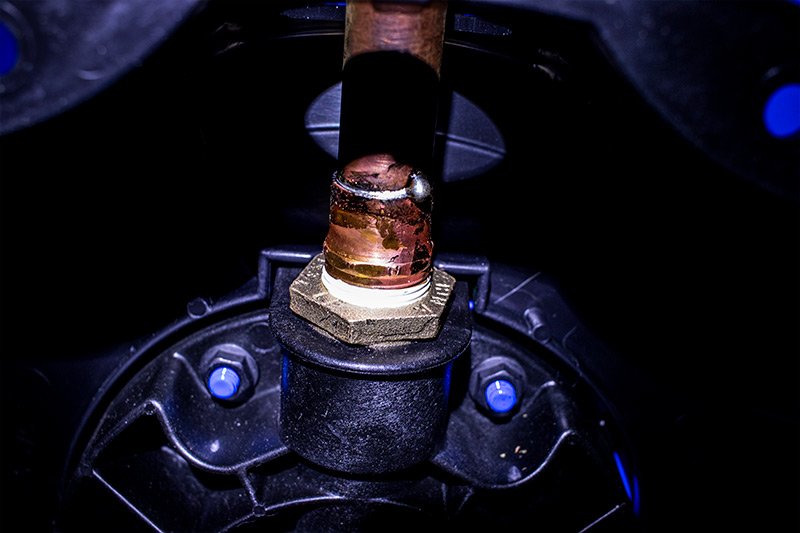
And after that, I attached the SharkBite valve and additional pipe with the elbow I soldered to it. Here are some photos of that. I hope someone out there appreciates these. The best part of this project was that I could assemble the tank upstairs and then simply carry it downstairs to attach to the rest of the system. That was much more fun than working downstairs in the basement exclusively.
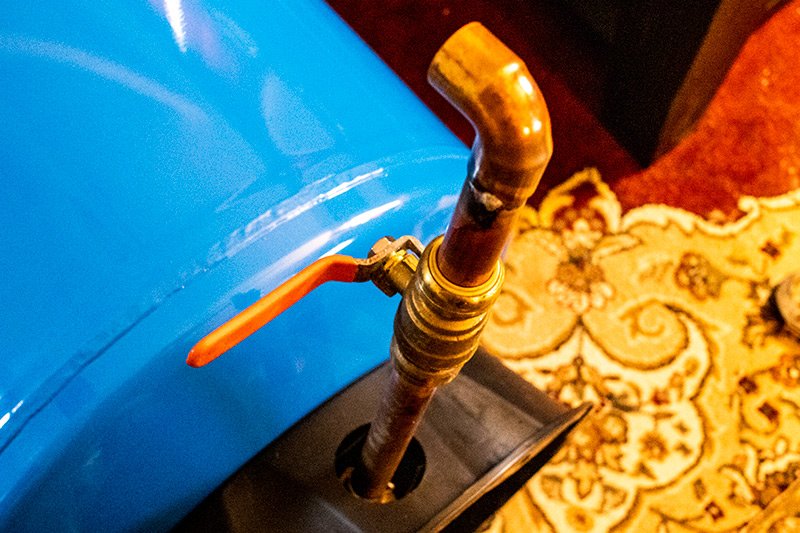
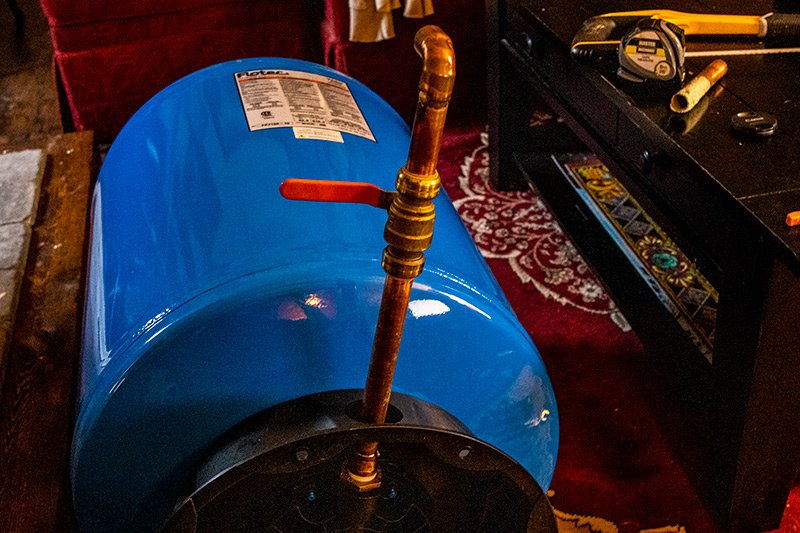
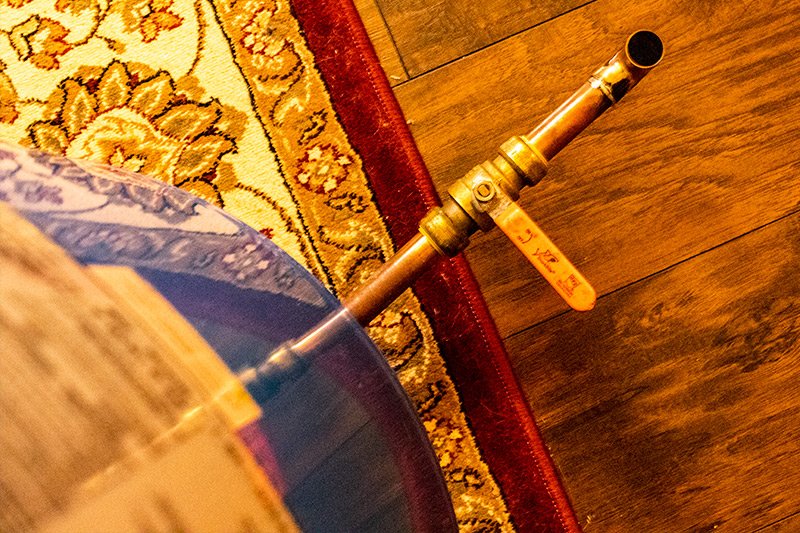
I have a weird feeling that there are going to be a few people out there who will roll their eyes at the fact that I used a SharkBite valve for this project. I can tell you that I’m happy with my choice in valves because as I said, I had to take everything apart to stop a leak. If I had soldered these pipes and fittings together, what a mess that would have been. I’m no plumber and I can’t solder upside down, so SharkBite and PEX it is for me. I also used a SharkBite coupling to connect this pipe to the house pipe.
This is what things looked like the first go-round. I had just finished soldering the pipes to the copper coupling and was quite proud of myself.
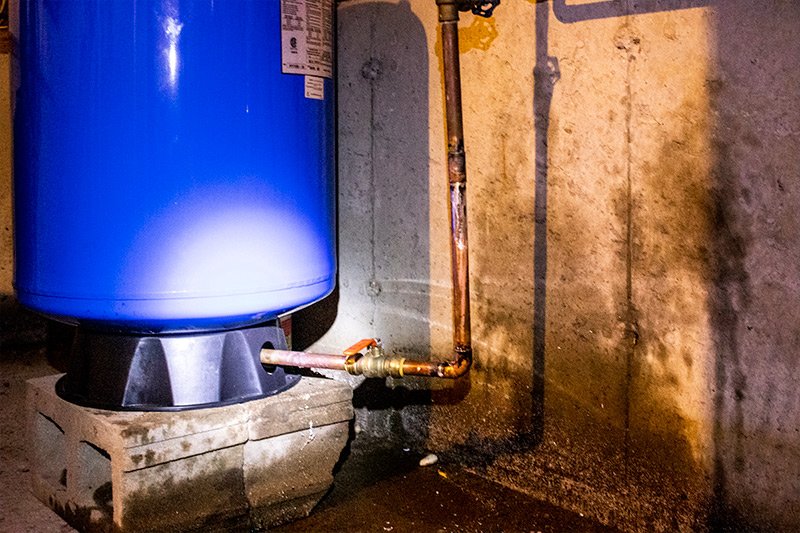
Unfortunately, after the pipe cooled down somewhat and pressure began to build in the pipes, I heard a slight hissing sound coming from the coupling I had previously soldered. Again, I obviously can’t solder upside down. I am very good at soldering when a pipe is lying on its side, but not so much when it’s vertical. Because of this, I used a SharkBite coupling that I had lying around instead. Those things are just so much easier to work with. I think the SharkBite pushback comes from the plumbing community. Plumbers don’t like it when we homeowners do things ourselves.
Anyway, after the leak fixing, the project was complete. I turned the well pump back on and it stayed on for the longest time I have yet to hear it stay on. It was incredible. The tank was filled about half way with water and the pump stayed off for the rest of the night and for much of today. As a matter of fast, it just turned on for the first time since. How crazy is that?
I’m also going to be taking things apart again soon because I want to re-situate some of the pipes down in the basement. I don’t like the way things are currently, so I’m going to neaten things up. I’ll take some photos to show you when I do that.
Thanks for reading!
Here’s the situation. A few weeks ago, I began hearing the well pump that’s located in our basement turn on and off much more than it used to in the past. We have a shallow well and because of that, the well is located above ground. And because of that, I can hear its operation rather clearly. Right through the floor. I sit and work on the computer all day directly above the pump. The pump and I have a very close relationship. I know exactly what it does as the day passes.
Since I didn’t like the sound of the kicking on and off every so often (around a half hour), I began my search for what was wrong. The thing is, when the pump did kick on, it would only do so for about a second. As if it only needed to bring up a tiny bit of water from the well. That’s when no one was using any water. We happen to have a small leak in our well check valve and that’s why the pump needs to turn on every so often. When water was being used, the pump would turn on and off much more frequently. More like every ten seconds for about a second or so. I knew something was up and I didn’t like it. From what I read, well pumps don’t like having to turn on and off so much. If they are forced to, they’ll burn out much faster than they normally would. They much more prefer to turn on and stay on for a few minutes just once or twice a day.
After a bit of internet and YouTube research, I discovered that what I had was a faulty pressure tank. A well pressure tank stores water that the pump draws from the well. As the name suggests, it’s pressurized so it can feed the home with water as opposed to having the pump do that. It saves the pump as well as a lot of electricity. This is how it works; the pump turns on and fills the pressure tank about half way with water. Then, the pump turns off. The pressurized tank then feeds the house with water, until it exhausts its pressure, when the pump fills it back up again. Think of the pressure tank as a water balloon. If you fill a balloon with water, it’s got pressure behind it. If you don’t tie the balloon and lay it on the ground, the water will squirt out of it all over the place. There you have it. A well pressure tank.
There are a few things that can go wrong with pressure tanks over time. The membrane inside of them (the balloon) can slowly leak or the membrane can become totally destroyed. Either way, the tank becomes waterlogged and it’s no longer of any use. So, if you suspect your well pump is, what they call, short-cycling, head down to your basement with an air pressure gauge. You’ll see a valve on the tank that looks like it’s from a bicycle tire tube. Check the pressure. If there is none, you’ve got a bad tank. This is what I discovered when I checked the pressure. There’s actually a correct method for checking the pressure. First you’re supposed to turn the well pump circuit breaker off and then you’re supposed to open some sink faucets to relieve any pressure that’s still in the system of pipes. Then check the tank with the gauge. There should be pressure in there. If you have a 20-30 pound pump switch like I have, the pressure should be 18 pounds. I had zero. Nothing. The pressure in the tank is always supposed to be two pounds less than the turn on pressure of your switch.
This is what our original tank looked like. I suspect it was bad since we moved into this house over six years ago. I just never knew what the well pump was supposed to sound like.

I believe that’s a 20-gallon tank. It’s an okay size for a smaller home without much water usage. You always want to get the largest tank you can afford because that will give you the longest lasting pressure without the pump having to turn on to refill it. These small 20-gallon tanks don’t offer much as far as lasting pressure goes.
To get us through, I filled the tank with 18 pounds of air pressure. This brought the well pump back to a routine that we were used to. I also went online and searched around for a new pressure tank. I found a few 20-gallon tanks that cost around $200, which I thought was just okay. Most of these tanks were offered by Home Depot. Then, as I continued to search, I found a “Flotec FP7120 Vertical Pre-Charged Pressure Water Tank, 35 Gallon” for $189.99 on Amazon. This tank came with free shipping, so it was a no-brainer. Almost twice the size for so much less than all the others. I couldn’t resist, so I ordered it.
Pressure tanks are a very simple concept. Let’s say you have a straight water pipe that leads from a source to a destination, such as the pipe that leads from your well to your kitchen sink. If you were to cut that pipe along the way somewhere and install a “T” fitting between the cut, and then run a single pipe from the T that leads to the pressure tank, you’d be good to go. That’s right. To install a pressure tank, all you need to do is splice into your pluming pipes somewhere and run a pipe to the tank. Again, all this thing does is add pressure to a plumbing system.
Since we already had a tank installed, I need to cut the pipe that led to it and remove the tank. I did that and was left with a vertical copper pipe down in the basement, hanging there, waiting for a new copper pipe to be attached to it. Before I did that though, I turned the circuit breaker for the well pump off so the pump wouldn’t turn on as I was working on the system. I also opened the kitchen sink to relieve any built up pressure in the pipes. Then, I began putting the pipes and attachments that were necessary for operation together.
Let me just say one thing before I continue. The old tank was filled to the brim with water. Apparently, the membrane that was inside of it was somehow decimated through the years. Not a good scene. It weighed a ton.
There are two primary attachment areas when it comes to pressure tanks. The first is to the tank and the second is to the pipe that leads to the rest of the plumbing in the house. For the tank attachment, I bought two adapters. Since the tank had a one inch female threaded opening, I needed a one inch male adapter that I was able to screw into it. Then, I needed to be able to screw in a 3/4 inch male adapter to that. That second adapter is what I’d solder the 3/4 inch copper pipe to. Here are some photos.


Do you see how the copper one can screw into the brass one? By the way, this is the same exact setup the old tank had. I didn’t even know that.
My plan was to solder a pipe to the copper adapter, attach a valve to that and then attach another pipe to the valve, solder an elbow and then attach another pipe to the existing plumbing. I began with applying some thread tape to the larger adapter.

As it turned out, this was unfortunately not enough tape. After putting everything together and turning the system on, there was a small leak. Always use lots of tape. Take it from me. I had to take everything apart again and start over.
The next thing I did was to fit the 3/4 inch pipe into the copper adapter and solder it. After that, I taped that adapter and screwed it into the first one.


Then, I screwed the pipe setup into the bottom of the tank.


And after that, I attached the SharkBite valve and additional pipe with the elbow I soldered to it. Here are some photos of that. I hope someone out there appreciates these. The best part of this project was that I could assemble the tank upstairs and then simply carry it downstairs to attach to the rest of the system. That was much more fun than working downstairs in the basement exclusively.



I have a weird feeling that there are going to be a few people out there who will roll their eyes at the fact that I used a SharkBite valve for this project. I can tell you that I’m happy with my choice in valves because as I said, I had to take everything apart to stop a leak. If I had soldered these pipes and fittings together, what a mess that would have been. I’m no plumber and I can’t solder upside down, so SharkBite and PEX it is for me. I also used a SharkBite coupling to connect this pipe to the house pipe.
This is what things looked like the first go-round. I had just finished soldering the pipes to the copper coupling and was quite proud of myself.

Unfortunately, after the pipe cooled down somewhat and pressure began to build in the pipes, I heard a slight hissing sound coming from the coupling I had previously soldered. Again, I obviously can’t solder upside down. I am very good at soldering when a pipe is lying on its side, but not so much when it’s vertical. Because of this, I used a SharkBite coupling that I had lying around instead. Those things are just so much easier to work with. I think the SharkBite pushback comes from the plumbing community. Plumbers don’t like it when we homeowners do things ourselves.
Anyway, after the leak fixing, the project was complete. I turned the well pump back on and it stayed on for the longest time I have yet to hear it stay on. It was incredible. The tank was filled about half way with water and the pump stayed off for the rest of the night and for much of today. As a matter of fast, it just turned on for the first time since. How crazy is that?
I’m also going to be taking things apart again soon because I want to re-situate some of the pipes down in the basement. I don’t like the way things are currently, so I’m going to neaten things up. I’ll take some photos to show you when I do that.
Thanks for reading!

